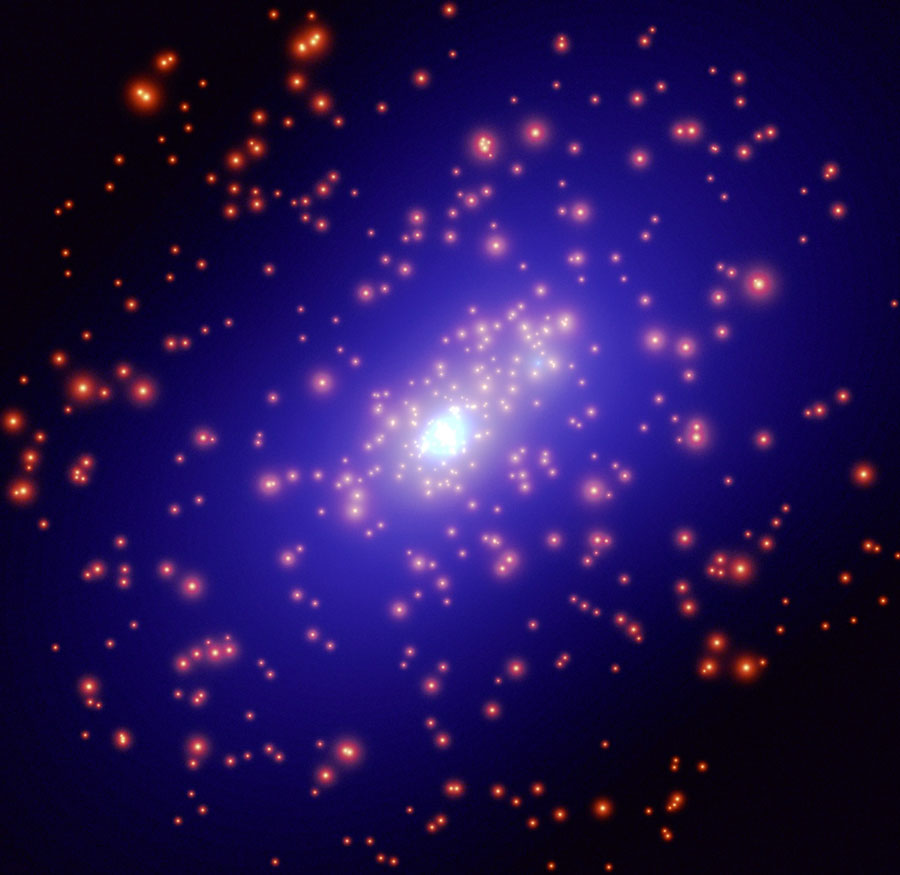Cosmology / Elementary Tour part 5: Dark matter and dark energy
While the predictive power of the big bang models is impressive, they also show us what we don’t know about the universe. Not only about the distant past, as detailed on the previous page, but also about the present universe: If you look around, all material objects you see are made of electrons and nucleons. But taken together, astronomical observations and big bang models show that this kind of matter is only the tip of the iceberg. Most of the mass in the universe is supplied by exotic forms of energy and matter for which particle physicists cannot (yet!) provide convincing models. The particles of the standard model of particle physics, it seems, account for a mere four-and-a-half percent of the mass of our universe.
A further 25 percent are supplied by a type of matter called dark matter. Such matter has a mass, and contributes to the mass of galaxies and galaxy clusters, but it doesn’t give off enough light to be detectable by telescopes. To detect it nonetheless, astronomers can resort to a number of tricks. One such result is shown in the following image of the galaxy cluster Cl0024+1654. The reddish color indicates visible light, emitted by ordinary, radiating matter. In a bluish-white color, the density of dark matter is plotted. Astronomers were able to deduce this density from the way this matter acts as a gravitational lens on light emitted by galaxies that are much further away than Cl0024+1654.

Gravitational lenses
© ESA, NASA and Jean-Paul Kneib (Observatoire Midi-Pyrénées, France/Caltech, USA)
Results to date indicate that a large fraction of dark matter should consist of a new type of elementary particle, which physicists have christened “WIMPs” for “Weakly Interacting Massive Particles”.
The final 70 percent take the form of what is called “dark energy”, a type of energy associated with negative pressure and present everywhere in empty space. Just as ordinary matter acts to attract other masses and to contract space, this dark energy attempts to make space expand in an accelerated way. Observations of distant objects show that, indeed, our own universe appears to be in a phase of slightly accelerated expansion. It is still not clear whether the dark energy is simply one more cosmological parameter or whether it is associated with some exotic form of matter field. Such a parameter, called the cosmological constant, had been introduced by Einstein in 1917 – a first incarnation of what is now called dark energy. Some particle theories beyond the standard model of particle physics, on the other hand, contain exotic fields which could possibly be used to embed the dark energy into a concrete physical theory.









